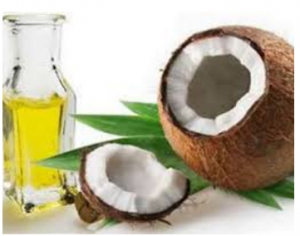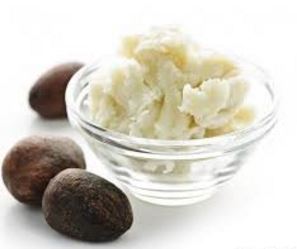Contents
Just What Are The LOC and LCO Methods About?
I am sure you are wondering – what are the LOC and LCO methods? Ok, we are not talking dirty, we are talking ‘hair’! As most naturals already know, the most common hair issue for most natural hair is – moisture retention which in turn leads to length retention – the two go ‘hand in hand’.

It is oh, so important for naturals to ensure that their hair stays hydrated and soft. It is a good idea to try one of the methods – the loc and lco methods. There are some hair basics to ensure this happening.
Its starts with the way the hair is cleansed and then the step after that which ensures that the hair retains its moisture until the next cleansing ritual. This can be achieved in two ways – using the LOC – liquid, oil, cream method or the LCO – liquid, cream, oil method.
Use either the LOC or LCO method to make your #hair shine! Share on XIt really is quite simple. You choose which method works best for your hair. The order of the products is not as important as the products used to achieve your goal.
Basics:
- Cleanse hair
- Apply liquid – L
- Apply oil – O
- Apply cream – C
- Style
Let’s talk about the products before we discuss the method.
Cleansing Products
I choose not to use shampoo for my cleansing ritual anymore. And if I decide to do so, it is usually a shampoo that is sulphate-free or castille soap. What’s the difference, one might ask? Well, let me give an example. The same ingredients that one finds in a typical dishwashing liquid product is some of the same that you will find in your common shampoo.
What is a sulphate? A sulphate is a form of detergent made of sulfur-containing mineral salts, the more common being Sodium Lauryl Sulfate (SLS) and Sodium Laureth Sulfate (SLES). They tend to foam a lot and tend to be very abrasive for the hair and skin.
So in order to minimize the stripping of my natural hair oils during the cleansing process, I choose to use Indian powders and conditioners to cleanse my hair. These products are more natural and so much softer on my hair. It does not dry out my locks but impart moisture, sheen and softness – every time.
Liquids

Now, a very common yet often forgotten liquid is the one and only – WATER! Yes, this is the BEST and the most inexpensive way to moisturize your hair! Once your hair is finished being cleansed, don’t dry it completely, leave some good ‘ole water dripping from your hair…and then go on to the next step.
For those of us who feel that water is not enough, they use a leave-in conditioner. There is nothing ‘right or wrong’ with this choice. The more ‘protection’ provided for your hair, the better. Of course, your choices will depend on the hair density – whether your hair is thick/full bodied or thin. Adding too many products can make your hair sticky and weighed down. SO, as always, try various products until you find that happy medium that works best for your hair.
I like to make my own leave-in conditioner. I sometimes use Aloe Vera juice by itself or mixed with some conditioner. However, in a pinch for time, I will use a pre-made product that is as close to 100% natural product ingredients in its make-up. See the list below.
Oils
Aaah, this is my favorite. I love oils. There are so many natural oils which are so good for your hair. They all do different things to your hair, but one common thread is the goodness they provide 24/7!
A few of the more commonly used oils are – olive, coconut, castor, carrot, jojoba, and argan. These oils are used as sealants for the hair. Their main purpose is to ‘lock’ in the moisture in your hair. They do this by providing a ‘barrier coating’ for the hair strand.
Creams
Creams are like a final touch – like ‘icing on the cake’, if you will.
This provides yet another barrier against dryness for the hair – it is like acting ‘double duty’. You might ask, why is it necessary? You already have applied your oils as a sealant, what more? Well, the answer is simple – adding a cream is much heavier in composition and will adhere to the hair’s surface better.
Then why not do that first, you might be thinking; well, it is all a question of choice. Either way, your hair needs the additional ‘safety net’ of moisture barriers. Some of the more common creams used are – Shea and Mango Butter
.
Well, this brings us to the discussion point as to which method is better – LOC or LCO. Well, in my opinion, I prefer the LOC method. I have thin stranded hair, so applying all these sealants for me, means sometimes a heavy, weighed down look (when I use the LCO method) – which is not ‘pretty’ depending on the style I am wearing.
I find that if I use the LCO method, my hair feels more weighed down. Yes, I am doing my best to moisturize my hair, but of course, I have to be happy with the outcome…outlook as well.
I seem to have more control when I use the LOC method. More control in the sense of gauging the amounts and the effects of the oils and creams applied to my hair. You will only know what works best for you by ‘trial and error’ – maybe lots of trial and errors!
Application Methods
This is also pretty simple. Once you cleanse your hair, you have two options:
- you can further do an oil rinse with an oil of your choice
- or you can simply put some oil in your palms and then massage into your hair. Either way does the job intended.
After this step, then you would then massage some cream over the hair strands. Of course, this also depends on your chosen style. I have found that this is great when I do finger coils as my style of choice. My coils last longer, shine forth health and stay moisturized longer.
Product List
LIQUIDS
Water
Aloe Vera juice
OILS
Olive
Castor
Jojoba
Coconut
Carrot
CREAMS
Whipped Shea Butter
Mango Butter
My Final Thoughts On Just What Are LOC and LCO Methods About?
In the long term, it really does not matter which method you choose as long as you are using a method that helps to reflect the hair of your hair that you seek.
I hope you have found this article about the loc and lco methods resourceful. I would love to hear your feedback on which ever method you have experimented. Good luck!
{This article has been updated Jan 2019}
Images courtesy of Pixabay.
 How would you like to learn how to post on a blog like this one?
How would you like to learn how to post on a blog like this one?
You can put your thoughts on paper but learning how to build your own blog is something different. If you have the right training it is not that difficult.
When you learn how to build your own blog you get to choose the things that you write about. You can also use the blog to make extra income. Here is where I learned how to build my own blog and connect with people who helped me along the way.

